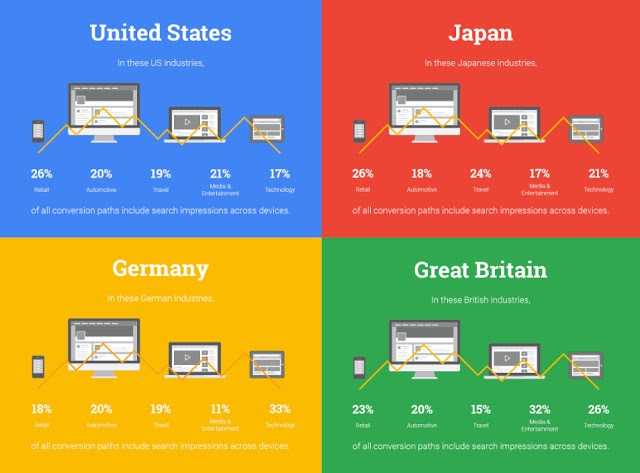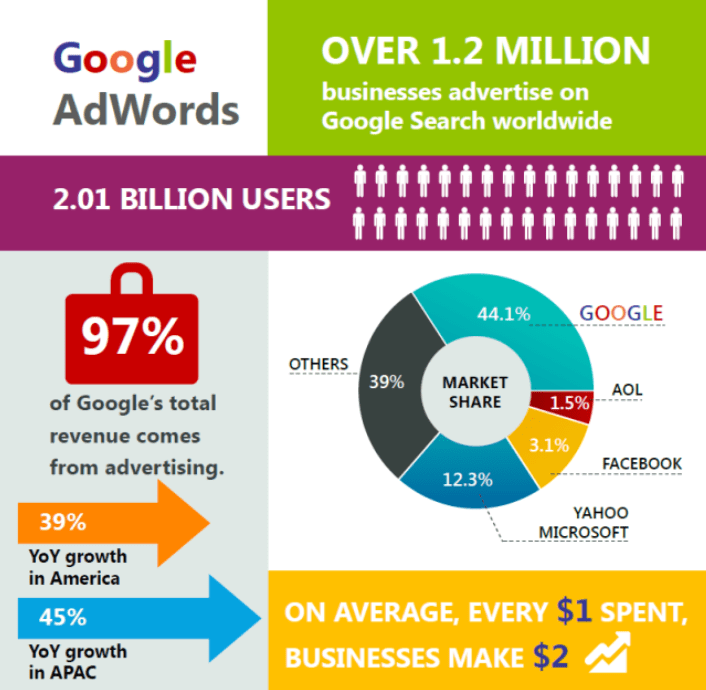The holiday season is fast approaching and with it comes eCommerce’s most lucrative time. As you prepare your landing pages, build up your stock and plan your promotions, you may find yourself wondering if you need to use Google AdWords this holiday season. The answer is a resounding: yes!
It may be tempting to down-size as competition and price per click rates increase, but you can be sure your competition is doing the opposite. If you turn off your AdWords completely, you run the risk of losing your position as your competition moves up in ad rank. Meaning, in the quieter months, you will battle to regain your position, costing you more in the long run.
As we learned in our guide to leading traffic sources, Google AdWords is one of your more effective sources. So yes, the holiday season is a time when you need to increase your budgets, watch those conversations much more closely and establish your ranking for the post-Christmas lull. Navigating this requires optimized ads, strong call to actions, and strong, enticing keywords; ensuring you’re taking full advantage of the peak shopping season to drive traffic.
Yeah, I get it. You have reservations: it’s expensive, it’s not converting, I don’t have the time. As a new online store, it’s easy to get distracted by these common AdWord myths. To that end, I broke down the three biggest myths surrounding Google AdWords, to show you why you need it for the holiday season.
Myth 1: Google AdWords is Expensive
Google AdWords may seem expensive, but it has a lot more to do with how you’re using it than the cost of the platform itself. Navigating paid search can feel like a full time job, but despite it’s complications, learning as much as you can will ensure you are using it to it’s full potential for the lowest possible spend. Here are a few tips to help elevate the costs:
Learn how to restrict and manage your match types to hone in on your niche market.
This can be done by adding multiple match types to the same ad group, restricting match types by ad group and restricting match types by campaign. This will ensure you hit the nail on the head this holiday season while you monitor your search queries and bids.
Use manual bids for more control over your Google account budget.
Converting automatic bids to manual is the number one tactic by businesses to lower their costs or to get the best ROIs for their spend. This can seem overwhelming at first, but if you start one campaign at a time, you can get it done. Here’s a tip from Google on how to go manual.
Create separate budgets and strategies for web browsing (AKA: Display Network) and search campaigns.
Search campaigns are suited for when you want to expand your reach by extending your targeting to include search partners or you’re working with a limited budget. Google display network or GDN places ads on a collection of websites, which ranges from blogs to news sites and even YouTube and should be used when you want to familiarize people with your brand and have a ‘photogenic’ or luxury product.
Myth 2: Google AdWords Doesn’t Convert Well
If you’ve tried AdWords and found your conversion low, chances are there are some flaws in your strategy. There are a number of reasons why this may be the case and we’ll look at this in full detail in the coming weeks. But to start you off, these flaws include:
Your account not being set up correctly.
The way your account is set up and structured is vitally important in getting the best converting results. These account mishaps can include using the wrong targeting keywords with bad scores or not blocking irrelevant searches with negative keywords.
Your adverts and campaigns do not match your landing pages.
In other words,you use keywords to hook traffic that are unrelated to the content on your page, resulting in terrible bounce rates and lower conversions.
Your landing page is not as amazing as you think.
Without A/B testing, there is no way of knowing 100% if users are receiving your landing page content well. Bad landing page design, copy and user-friendliness results in missed business.
Myth 3: Google AdWords Takes Too Much Time
Yes, Google AdWords can be complicated and time consuming. But with so many tools, systems and apps out there to help you, you can reduce your campaign management time. Or even better, use tools that take all paid search management off your hands to get you the best traffic results for the least amount of spend and time, like our very own Traffic Booster. The point is, AdWords is an eCommerce must and even more so during the holiday season. Working it into your timetable is essential. Here are some tips to help you save time with Adwords:
- Delete non-performing ads and declutter your account.
- Having more landing pages doesn’t mean more conversation. Instead, keep the high performers and delete the rest.
- Or, set up automated rules, like the video below:
Convinced yet? No? Get a look at these Google AdWords stats from The World of Digital Marketing:
Now are you convinced? Great! Then here are some quick ways to prepare your AdWord campaigns for the holiday season:
Start planning now!
October is the optimum time to start pushing and planning for the busy season to ensure you’re ready by the Thanksgiving weekend.
Get your calendar ready!
Decide now what products you will be promoting, and plan your holiday marketing calendar now.
Use remarketing to expand your reach of first-time buyers over the holiday season.
Remarketing is a form of online advertising that enables you as an advertiser to show ads to users who have already visited your site while browsing the web. This is helpful during this time as it allows you to remarket to previously interested traffic at a time when they are more likely to shop.
Set your KPIs!
Determine your KPIs (key performance indicator) beforehand, ensuring you are able to efficiently adduct and change budgets during the busy season to match your desired KPIs. Your KPIs include how many clicks you get and your click-through rate versus the amount of money you are spending.
Test, test, test!
Test your promotions, ads, products and strategies before the peak season begins to iron out any campaign kinks.
Stay tuned for more traffic-driving tips! If you have any questions or topics you want us to focus on, let us know in the comments below.
Understand the importance of paid ads, but need an expert helping hand? Try Traffic Booster now!

Nicole is a content writer at StoreYa with over sixteen years experience and flair for storytelling. She runs on a healthy dose of caffeine and enthusiasm. When she's not researching the next content trend or creating informative small business content, she's an avid beachgoer, coffee shop junkie and hangs out on LinkedIn.
Recommended articles
 Facebook Ads for eCommerce: 16 Strategies, Examples & Tips
Facebook Ads for eCommerce: 16 Strategies, Examples & Tips
 How to Build a Winning eCommerce Ads Strategy
How to Build a Winning eCommerce Ads Strategy
 Google Ads for eCommerce: Everything You Need to Know
Google Ads for eCommerce: Everything You Need to Know
 10X Your Traffic with PPC Management Software
10X Your Traffic with PPC Management Software
Comments
Powered by Facebook Comments




